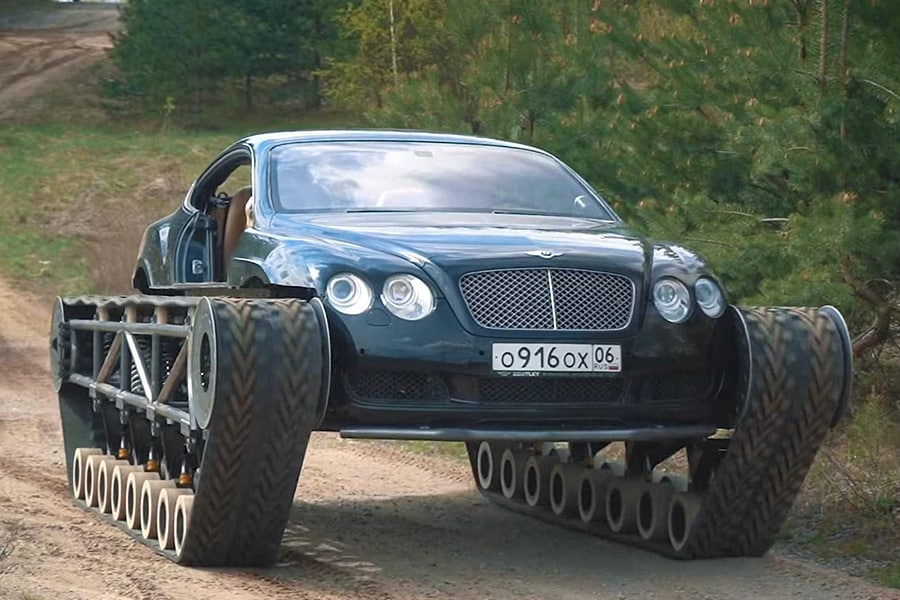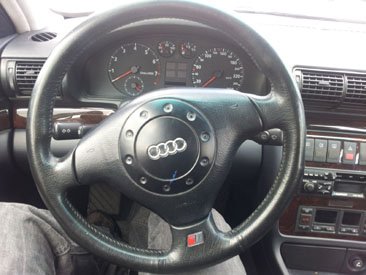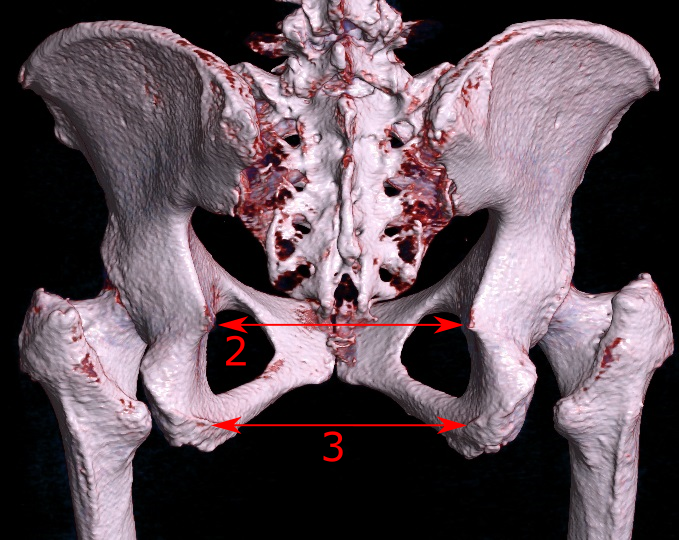Bob loves the weight room. Having a challenging workout is his alone time, and his way to relieve some of the stress from work and family matters. He likes to focus his fitness goals towards adding muscle mass. Although, he is aware of a muscle asymmetry between his left and right sides. Bob came to speak with me because he noticed his hips weren’t level when squatting.
“I can squat below parallel, but when I am at the bottom it appears that my right ass cheek is lower than my left.” Bob demonstrated a body weight squat; he used a strategy that pushed his knees out wide, but he did descend rather easily. Sure enough, his hips didn’t appear the same at the bottom.
Bob continued, “I get some lower back pain when I really focus on my back squats. Also, I think my right quad is a little thicker than the left. How is that possible? I do the same amount of volume on both sides for my single leg exercises.” “You and I have some similarities!” I said with a smile. “You are doing the same amount of work on each side, but each side is not working the same.” Bob looked confused but intrigued.
“Let’s show you. Is it OK if I video you performing single leg squats to this box?” Bob happily agreed, and I recorded a side view of a left and right leg single leg squat to box. “How did those feel?” I asked. “Fine… a little easier to lower on the left. That’s why I don’t understand why my left hip seems higher at the bottom of my back squat.” I held up the video. “Let’s look at the game film. Compare how much your knee can drift forward over your toes on each side, how far you have to sit back on the box on each side, and the amount of forward lean of your upper body when you squat on each side.”
Bob said, “My knee drifts forward more on the left. Also, I am more upright and don’t sit as far back on the box on my left.” “Awesome! Now look at how you stand up on each leg after you get to the box.” Bob thought for a moment and watched the videos again. “On the left I spend very little time on the box… like I bounce to get up. On the right, I sit back fully and like muscle my way up.” “Exactly! Very perceptive! Do you know what that means?” “No…” Bob replied. “You may be performing an exercise with each side, but you use a different strategy to complete the task with each side. You are essentially performing a different exercise with each side of your body, and thus promote different adaptations.” Bob looked at me and chuckled, “it’s not as simple as just get from point “A” to point “B”.”
A Position Problem
The situation Bob is experiencing is rather common, and the advice that a single leg exercise variation may help rectify the issue is sound. However, the majority of clinicians, therapists, trainers, coaches, ex-athletes, and meat heads at the local gym don’t understand is the “why.” They will say one leg is “weaker” than the other so it needs some isolated work. The truth is that an imbalance like Bob’s is rarely a force production problem. In fact, the perceived weak leg is doing the best it can with the constraints it’s given. This is a bone position problem, and thus a muscle position problem.
We all know bones move. We can see people move their arms, legs, necks and spines. What may be less obvious is the position of bones underneath the perceived movement: the forward head position often associated with individuals who spend tons of hours at a computer; the military neck position as if always standing at attention with a drill instructor in your face; the rounded shoulders resulting in moms everywhere to snap at their child to stand up straight; the people who walk with their feet turned out; the individuals who appear to have knees collapsing in or bowing out; the oh so prevalent Daffy Duck butt that Instagram fitness “models” promote.
A little time spent people watching will bring your awareness to many examples. All presentations are obvious instances of bones in positions other than the perfectly symmetrical dead guy anatomy from text books, and taught in school. The overly simplified, reductionist model of human anatomy from our education system impacts application of exercise in reality. Thus, there is a lack of understanding, even amongst fitness professionals, of how changes in bone position impact exercise outcomes.
When bones change position there is a systemic impact. When one end of a spider web is pulled the whole web changes shape to some degree. When the bones move so do the attachment sites of muscles. When the attachments sites of muscles move muscles change in length, and function at a different angle. And, since this change is occurring in one area of the body, the connected web of tissues alters bone and muscle position to some degree throughout the body. This impacts the force producing capabilities of muscles, joint range of motion an individual may access, and performance of complex movements – which includes squats. The bone and muscle positions we can access will influence how we complete an exercise. Our movement and force producing strategies will adapt to complete the task.
Asymmetrical Force Production Strategies
Bob’s force producing strategies on each side of his body are very well developed given the position his bones are “stuck” in. This is why Bob will be able to complete an exercise for the same amount of reps, or maybe even with equal resistance, on each leg. However, it is how the exercise is performed that shows the difference in the position of the body side to side.
Bob was strengthening a force producing strategy on each side, but it was not the same strategy on each side. The different strategies may not be ideal in specific scenarios. This is the case when combining them during a bilateral leg exercises. The difference on each side creates a twist – the uneven hips in Bob’s case. Also, the variance in ability will change how someone pushes laterally, rotates, and goes into and out of a cut (change of direction) one way versus the other. One side of his body will be really good at a specific skill and his other side… not so much.
Thinking of the human body as two halves can be useful. We have previously discussed how producing high muscular force outputs pushes the body forward. We can take that concept and apply it to the left and right side of the body. So one side can push forward “x” degrees and the other side can push forward OR go backward “x” or “y” degrees. It’s like the treads on a tank. The left tread can move forward and the right can move backward creating a tight right turn. Furthermore, the left and right treads can both be moving forward, but one side at a greater rate. The result is a more gradual turn like going around a bend on the highway. The degree of difference between rate of rotation of the left and right treads determines the angle of the turn.
We can think of the muscles on the back side of a human as the treads of the tank pushing each side frontward to create forward motion. The muscles on the left side pushing forward and the right side muscles holding back will create a tight right turn. The left and right side both pushing forward but with different amounts of force will create different angles of turning. The musculature on the left and right should rarely be acting exactly the same because humans are bipedal.
.

The Alignment Is Off
The left and right sides of the body being pushed forward at different rates is what allows us to walk and move. But, there must be a gradient of force production between the left and right sides. Also, the variance in force has to be able to alternate from side to side. If one side is constantly pushing forward harder than the other there is constant rotation, and the web of tissues stays biased toward the shape of a turn.
This shape change is not always noticeable to the untrained eye because humans are great at compensating to complete movement tasks; however, the degree of the rotation determines how noticeable it is when someone walks. When you see someone limping or walking unevenly that is a dead giveaway there is some asymmetry in rotation present. Other times, movements with a larger range of motion, like a single leg squat, are needed to see the discrepancy.
Ultimately, being biased toward a rotational shape change is like driving with the alignment of your car always being off. Your alignment can be biased right and you will have to adjust by turning the wheel left to drive straight. The more the right bias the more you have to turn left. Performing a bilateral leg exercise like a back squat with this asymmetrical alignment is like stepping on the gas pedal while trying to keep the steering wheel left – it’s going to cause some wear and tear. The amount of potential damage depends on how much compensatory left turn of the steering wheel is needed.

Do What You Have Always Done, Get What You Always Got
Remember how Bob struggled to allow his right knee to drift forward of his toes, he sat far back on the box on the right, and he had a greater amount of forward body lean when on his right leg. These are examples of the alignment being off. The left side is pushing forward more than the right side even when Bob is trying to push off his right. The goal would be to teach his right side push forward more, and his left side to hold back and push forward less.
Performing single leg exercise variations can help re-align, and regain the ability of the web of tissues to shift into either rotation. However, it depends on how the single leg exercise is performed. Without specific criteria with exercise execution, it will be completed with the same rotation strategy that is present. This will just strengthen the current situation – like in Bob’s case. In essence, the goal is to flip the left and right strategies. This will allow an individual to access more movement and force producing strategies on both the left and right side.
A right foot forward step-up or split squat with a low cable resistance in the left hand may help in Bob’s scenario. Holding one dumbbell in the right hand while performing a right foot forward step-up or split squat may also be useful. There are many possibilities. The best choice for each individual will depend on the idiosyncratic position of bones and muscles; thus, the importance of assessments and custom programming.
Conclusion
Bob was on the right track by realizing he needed to perform some single leg exercises to help him out. He was just unaware that humans are great at finding a way to complete movement tasks even when bones and muscles change position and alter alignment. This is why Bob developed different strategies on his left and right side to descend and ascend from the single leg squat to box. They weren’t bad strategies until they became his only strategies. A lack of movement variability limited his ability to respond proficiently to other tasks. Some exercises may have to be performed differently with each side of the body, or only on one side, to recapture strategies Bob has lost. With some guidance and consistency many issues may be reversed or effectively managed.
Cover picture from:
https://commons.wikimedia.org/wiki/File:Interspinous_and_intertuberous_diameters.png

